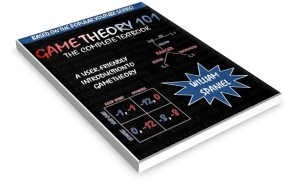This lecture shows a major problem with aggregating social preferences.
Takeaway Points
- Suppose we have a group of individuals with rational (complete and transitive) preferences. Many seemingly sensible rules for aggregating these preferences can result in irrational social preferences. Majority rule is one of these.
- For example, suppose Marco prefers A to B to C, Ted prefers B to C to A, and Donald prefers C to A to B. Consider how majority rule would determine the group’s preference between A and B. Marco and Donald prefer A to B, and thus majority rule means the group prefers A to B. Now consider the group’s preference between B and C. Marco and Ted prefer B to C, and thus majority rule means the group prefers B to C. Finally, consider the group’s preference between A and C. Ted and Donald prefer C to A, and thus majority rule means that the group prefers C to A.
- Combining these preferences together, the group prefers A to B, B to C, and C to A. Despite no individual having a preference cycle, their collective preference cycles!
- Marquis de Condorcet was the first person to point out this problem with majority rule. We therefore call the disconnect between individual and social preferences Condorcet’s paradox.
- Other methods of preference aggregation can sidestep the paradox. However, all other solutions come with problems of their own. See Arrow’s impossibility theorem.
- We consequently need to be careful about modeling group preferences in a game theoretical context.

